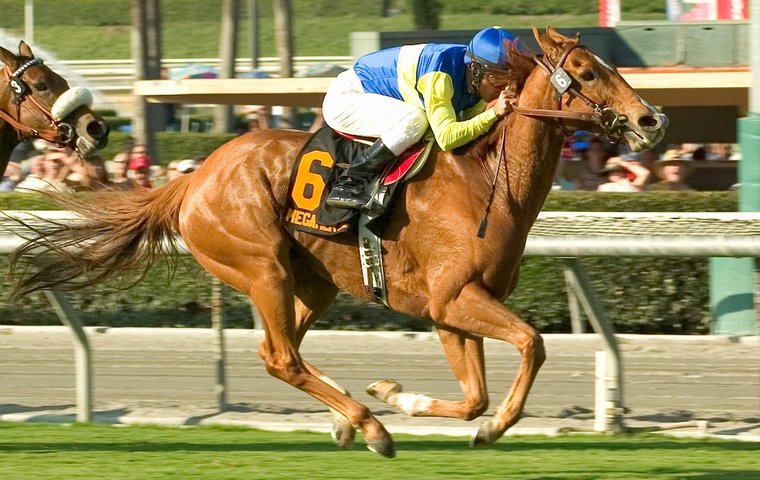
In the latest instalment in his unmissable series listing his personal favorites, Jay Hovdey remembers the little filly with the big heart who moved her legendary trainer Bobby Frankel to tears
She had everything stacked against her. A checkered past. A small frame. A running style that always left way too much to do. And yet, for three entertaining seasons at the turn of the 21st century, the little chestnut named Megahertz produced a steady stream of thrilling performances that sometimes defied belief.
It was quite a sight, Alex Solis perched up there atop Megahertz, looking like he’d just jumped aboard the family’s golden retriever. Bobby Frankel did not exactly need to bend down to saddle her, but it wasn’t much of a reach, and when she entered the gate there was enough room on either side to add a set of saddlebags.
Then the doors opened and Megahertz went to work. The scene would be Santa Anita, Hollywood Park or Del Mar, nine or 10 furlongs at least, and for most of the race the entire field would be in her sights.
The bigger girls would be loping along up ahead, graceful as gazelles, while Solis stayed chilly and centered at the back, waiting for the moment he would let loose his pint-sized rocket. A dozen times she fired, straight into a winner’s circle, always in stakes, plus a 13th hard-fought prize in which she was put up on a disqualification.
Despite spending the early French part of her career in lesser two-year-old races, Megahertz was hardly a waif from the dusty side of the tracks. She was bred by the fabled Cheveley Park Stud, the oldest establishment in Newmarket, whose history includes 1828 Epsom Derby winner Cadland, 1893 English Triple Crown winner Isinglass, and a collection of rare 20th century jewels.
Since 1975, Cheveley has been owned by the Thompson family. Their storied colors have been carried by Classic winner Russian Rhythm, Breeders’ Cup winner Queen’s Trust, and champions Gay Gallanta and Inspiral, as well as 1992 Grand National winner Party Politics.
Above all, Cheveley Park is known as the home of Pivotal, the homebred son of Polar Falcon whose meteoric racing career lasted just six starts, highlighted by victories in the Kings Stand and Nunthorpe Stakes, followed by 23 robust seasons as a stallion back at his place of birth.
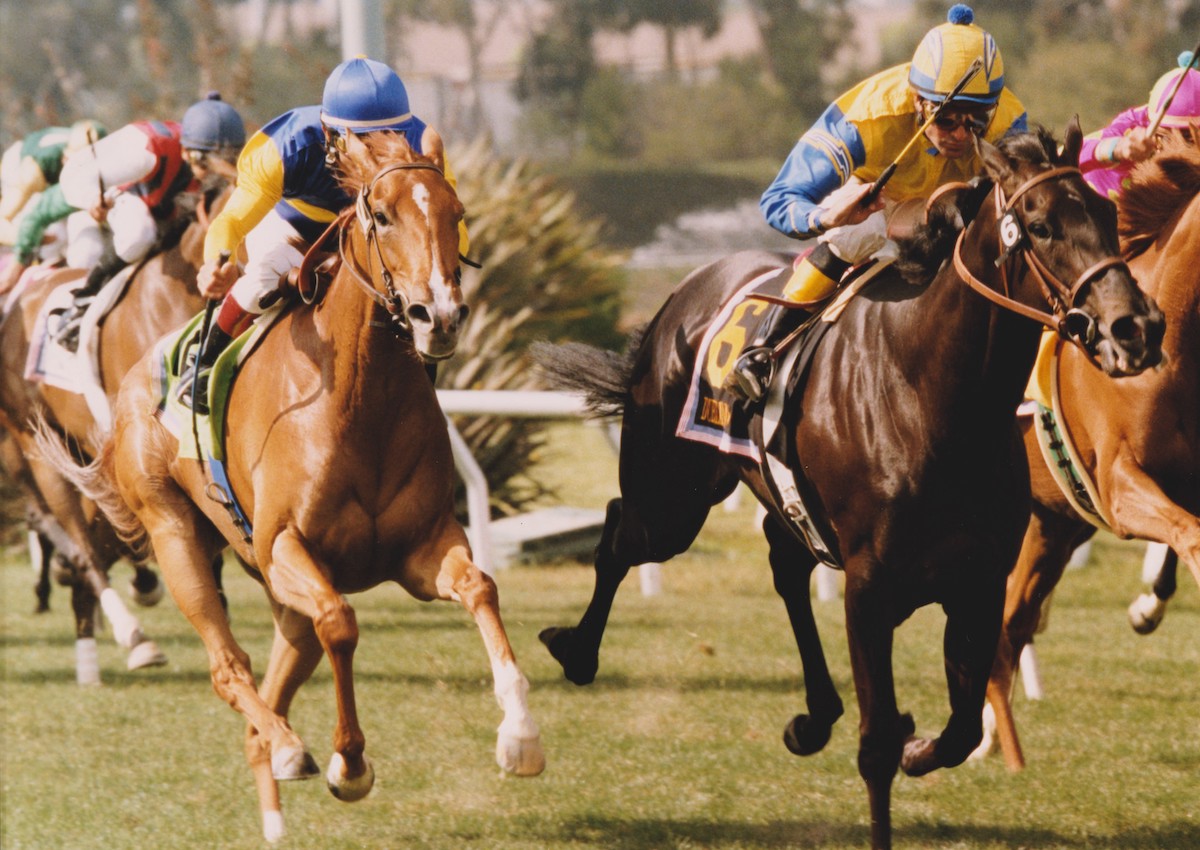 Pivotal’s legion of foals includes American champion Golden Apples, Dubai World Cup hero African Story, and the winners of the Epsom Oaks, Irish Oaks, Irish 1,000 Guineas, German Derby, St. James’s Palace Stakes, Coronation Stakes, and just about every major sprint event in Europe. Pivotal died in November 2021.
Pivotal’s legion of foals includes American champion Golden Apples, Dubai World Cup hero African Story, and the winners of the Epsom Oaks, Irish Oaks, Irish 1,000 Guineas, German Derby, St. James’s Palace Stakes, Coronation Stakes, and just about every major sprint event in Europe. Pivotal died in November 2021.
Megahertz was from Pivotal’s second crop, foaled on May 4, 1999. She was the first born of Heavenly Ray, a modest winner and lightly raced daughter of the Blushing Groom stallion Rahy, whose dam was champion Glorious Song. By then, Rahy already was well on his way to rock star stallion status with such sons and daughters as Serena’s Song, Fantastic Light, Exotic Wood, Hawksley Hill, Tranquility Lake, and Mariah’s Storm, who in turn was the sire of Giants Causeway.
Nothing to write home about
As for Heavenly Ray, her female family was nothing to write home about, although her granddam, Plankton, was among the best mares of her generation, winning New York stakes at ages two, three, four and five. Plankton’s lone G1 victory came in the 1980 Ladies Handicap at Aqueduct, when she was best in a three-way photo finish.
(A word here as well about her name, inspired by her dam. The term ‘hertz’ is a unit of measurement pertaining to the frequency of cycles per second. For instance, the second hand of a clock cycles at one hertz. Electromagnetic currents and wavelengths – musical tones, radio transmissions, microwave, digital computing etc – travel considerably faster, and all at different speeds. The term for a single unit of one million cycles per second is a ‘megahertz’.)
 Megahertz was trained first in France by Robert Collet and then by Nicolas Clement, winning only once, at Deauville, in eight starts, while usually in for a selling price. Through a European agent, she came to the attention of Bobby Frankel, who bought her for a song and brought her to Southern California.
Megahertz was trained first in France by Robert Collet and then by Nicolas Clement, winning only once, at Deauville, in eight starts, while usually in for a selling price. Through a European agent, she came to the attention of Bobby Frankel, who bought her for a song and brought her to Southern California.
“I’d always wanted to have a horse in Bobby’s barn,” said Michael Bello, for whom Megahertz became an entrée to the heights of the game. “How it finally happened is an interesting story.”
Bello made enough money in home and commercial construction to both afford to buy racehorses and establish his own winery. The two came together through jockey Alex Solis, the future Hall of Famer and wine connoisseur, who let Bello know that Frankel – a notorious homebody – was curious to see what all the fuss was about in that place called Napa Valley. Bello was building his winery there at the time.
“So we took a trip up there and had a fun weekend,” Bello said. “Bobby wasn’t a real people person, but we got along pretty good. At one point he told me about a filly that had just shipped into his barn, and he thought she could do well. I asked if I could buy her.”
Megahertz, the filly in question, was entered to run the following Wednesday in the listed Blue Norther Stakes at Santa Anita, for three-year-old fillies on the grass. Frankel’s terms were simple: send him $140,000 before the race and she’s yours, but do not look at her form.
The ‘Frankel mark-up!’
“Of course, I said yes immediately,” Bello said. “But I also looked at her past performances, and I saw that she’d been running for what amounted to $32,000. It was the Frankel mark-up!”
Undaunted, Bello brought friends and family to Santa Anita on a cloudy weekday to witness the performance of his first horse trained by the fabled Frankel. The date was Jan. 9, 2002.
“For one thing, she’s tiny,” Bello said, harking back to his first impression. “Alex is riding and he looks huge sitting on her. Then she barely gets out of the gate and she’s last by many lengths. I know already I’ve overpaid, and now this. I’m thinking, what did I get myself into? Then all of a sudden she starts pouring it on. That turned out to be her style, but who knew? She comes out of the clouds and beats Bobby’s other filly in the race.”
Just like that, Megahertz assumed an important place in the most prolific stakes stable in North America. As 2002 unfolded, her Frankel barnmates included Medaglia d’Oro, Beat Hollow, Lido Palace, Milwaukee Brew, Mizzen Mast and a Murderers’ Row of females comprised of Sightseek, Tates Creek, Starine, and You.
Racing in nothing but stakes, Megahertz went on to win half her starts for Bello and Frankel – 13 of 26 – and hit the board in another eight, when her frantic finishes were compromised by pace or traffic. Most of the time, Solis was wise enough to simply swing wide and hit the afterburners. After a while, the Megahertz races began to rhyme.
‘Funnest horse to ride’
By the end of his career, which featured 5,035 winners and prize-money earnings of $238.4m, Solis had been the regular rider of champions Snow Chief, Kona Gold, and Ryafan, along with a cavalcade of major stakes winners for such trainers as Richard Mandella, John Sadler, Charlie Whittingham, and Ron McAnally, as well as Frankel.
Asked what comes to mind when the name of Megahertz is summoned, Solis offers a first reaction that speaks volumes. “She was one of the most funnest horses to ride,” he said, with emphasis on all the superlatives.
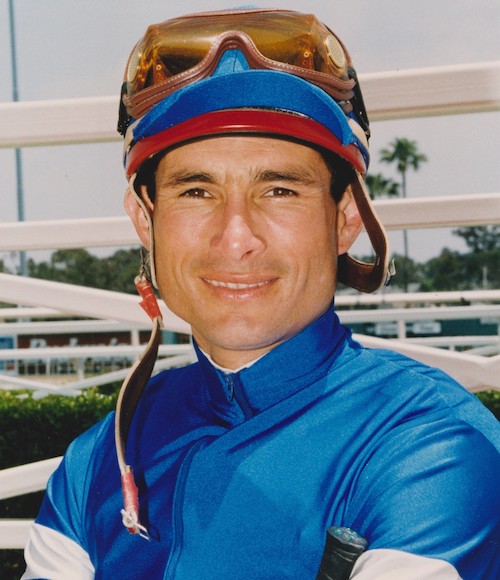 Solis went on to describe Megahertz as a “real character,” who was “very unique”, “very temperamental” and “very tricky to ride”.
Solis went on to describe Megahertz as a “real character,” who was “very unique”, “very temperamental” and “very tricky to ride”.
“She had a mind of her own,” Solis added. “She only did things the way she wanted to, or else she would get upset. You always had to adjust to her style of running. She’d want to stay in the gate and then be last. On the backside she would finally engage and do her thing. But it had to be her idea.
“She had a turn of foot that last quarter of a mile I never imagined a horse could have,” Solis continued. “It’s hard to explain, because you had to be on her to understand. The best way to explain it is if you’re in a car going 40 miles per hour, you punch the gas, and like that you’re going 60.”
Indeed, there were races in which Megahertz looked like a mad jackrabbit scrambling past a field of large hounds through the final furlongs of G1 races like the Yellow Ribbon Stakes at Santa Anita, the Gamely Handicap at Hollywood Park, and the John C. Mabee Handicap at Del Mar.
Up in the grandstand, announcers were ready to feed a crowd hungry for the Megahertz show. “She always jumps to mind,” said Trevor Denman, who called the 14 Megahertz races at Santa Anita and Del Mar.
‘I never remember her not firing’
“They’d come to the top of the lane, and you’d see this little thing pin her ears and come running. She had that attitude. It wasn’t just how fast she was running, it was how she was doing it. I never remember her not firing.”
In race after race, Megahertz would force Denman to plumb the depths of his colorful vocabulary. At various times, she would close like “an express train” or “a steam train” or “explode like a rocket”.
“I was almost glad when she retired,” Denman said. “I had run out of ways to describe what she did.”
Humberto Ascanio was Frankel’s right-hand man in California. When Frankel would go east to set up shop at Belmont Park or Saratoga, it was Ascanio who remained to train the West Coast string. Frankel trusted him like a brother. So did Megahertz.
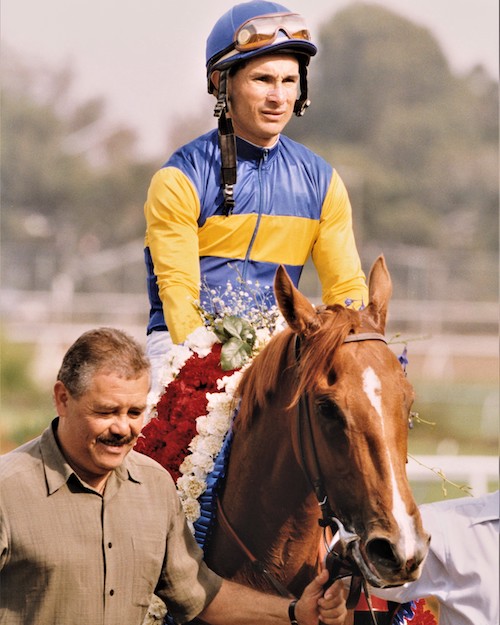 “She was an easy horse to train,” Ascanio said. “Different, but easy. In the morning she might take a half hour, 45 minutes to get to the track. Then when she was ready she would go on. Every day the same thing. Worked every seven days, half a mile, was all she needed to keep herself fit.
“She was an easy horse to train,” Ascanio said. “Different, but easy. In the morning she might take a half hour, 45 minutes to get to the track. Then when she was ready she would go on. Every day the same thing. Worked every seven days, half a mile, was all she needed to keep herself fit.
“Around the barn she was nice, quiet, but she could be mean in her stall,” Ascanio said. “She didn’t like anybody going in there, so I would take care of her. I didn’t try to boss her around, just treated her nice, and she would be okay. A little filly, yes. But she had a big heart.”
Megahertz picked up one of her wins upon the disqualification of the Lear Fan filly Dublino after their raucous duel in the first running of the 10-furlong American Oaks at Hollywood Park, on July 6, 2002.
Not only did Dublino drift outward as Megahertz came flying, Bello’s filly also took a couple of unintentional swipes across the nose from the whip of Dublino’s rider, Kent Desormeaux. The following month, the two fillies renewed their rivalry in the Del Mar Oaks. This time Dublino won by a nose, and the results stood.
The three-year-old campaign of Megahertz ended with a disappointment in the Queen Elizabeth II Invitational at Keeneland. She was fifth without much of an excuse, unless she was feeling the effects of a 10-month campaign or she simply did not take to the long, lush Kentucky grass that had been softened by rain.
“Because she was a little filly, she had to work extra hard to get over those softer eastern courses with the long grass,” Solis said, referring to the 0-for-4 record of Megahertz outside of California. “One of her best races, though, was in the Beverly D. at Arlington Park when she was second. That’s such a good course that even when it was kind of soft she handled it okay.” Megahertz lost that one by a neck to Angara in a four-horse finish.
Solis missed only four rides on Megahertz during her US sojourn, each time with a legitimate excuse. When the filly made her graded stakes debut in the 2002 Honeymoon Handicap at Hollywood Park, Solis was in New York winning the Manhattan Handicap aboard Beat Hollow for Frankel and Juddmonte Farm. Pat Valenzuela got the call and threaded his way through late traffic to get the win.
‘She could be very sneaky’
In late March 2004, Solis was committed to Pleasantly Perfect in the Dubai World Cup on the day Megahertz had a date in the Santa Ana Handicap at Santa Anita. Pleasantly Perfect seized the moment with victory in Dubai, while in California replacement rider Victor Espinoza briefly lost control of the hurtling Megahertz during the finish of the Santa Ana.
They finished first but interfered with another horse just enough to be disqualified. “Watching her finish on TV was very different from riding her,” Solis said, by way of cutting Espinoza some slack. “She could be very sneaky.”
Later in 2004, Solis was sidelined by surgery to repair a fractured vertebra suffered in an accident during the opening week of the Del Mar meet. As a result, Corey Nakatani took over aboard Megahertz in the Breeders’ Cup Filly & Mare Turf at Lone Star Park, but they finished far back in a race won by Ouija Board.
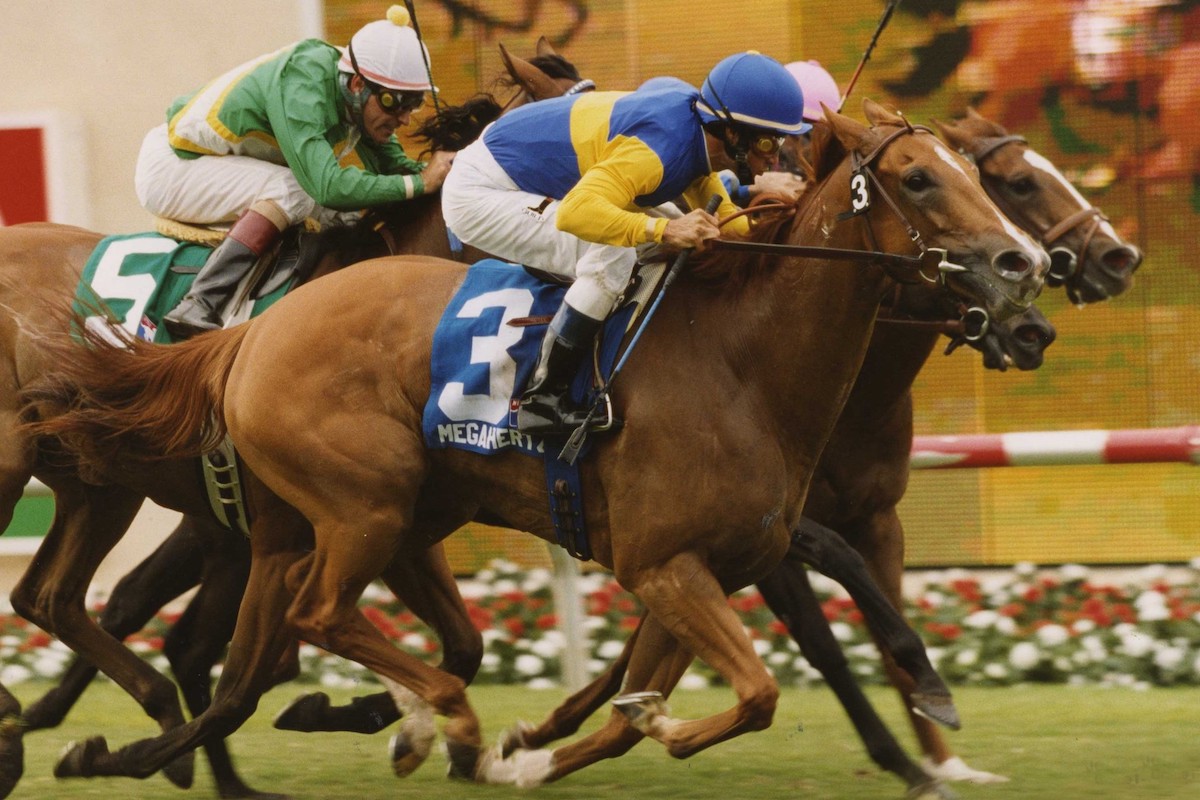 Frankel drew a line through that effort and wheeled his filly right back in the Hollywood Turf Cup five weeks later, this time with Rene Douglas on board. Megahertz responded with a bang-up second, beaten just a head by the five-year-old Argentine horse Pellegrino.
Frankel drew a line through that effort and wheeled his filly right back in the Hollywood Turf Cup five weeks later, this time with Rene Douglas on board. Megahertz responded with a bang-up second, beaten just a head by the five-year-old Argentine horse Pellegrino.
On Oct. 29, 2005, Megahertz tried for a third time to make an impact in the Breeders’ Cup Filly & Mare Turf, this time at Belmont Park. Since she was fresh from a triumph in the prestigious Yellow Ribbon at Santa Anita, horseplayers made her co-second choice behind defending champ Ouija Board.
A victory could have meant a national championship, but the deep grass over the giving ground did her no favors. At one point she was a sixteenth of a mile behind the next-to-last runner. In the end, Megahertz did well to pass a half-dozen opponents to finish eighth, while Frankel won the race with his other entrant, Intercontinental.
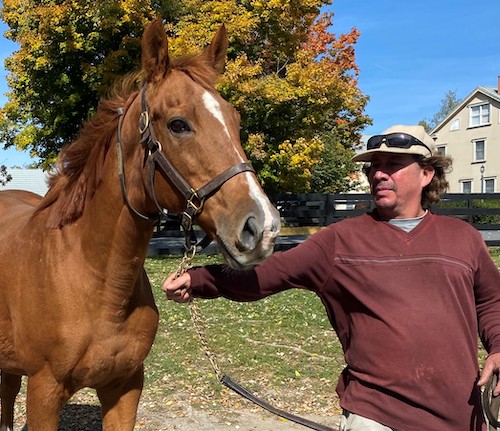 That was the final start for Megahertz. She didn’t earn a dime, but it hardly mattered. From Bello’s $140,000 investment, Megahertz had earned $2.2m. In November 2007, Bello scored again when Megahertz, in-foal to Bernardini, brought $2.1m at the Keeneland sale from the Lael Stables of Roy and Gretchen Jackson.
That was the final start for Megahertz. She didn’t earn a dime, but it hardly mattered. From Bello’s $140,000 investment, Megahertz had earned $2.2m. In November 2007, Bello scored again when Megahertz, in-foal to Bernardini, brought $2.1m at the Keeneland sale from the Lael Stables of Roy and Gretchen Jackson.
Unfortunately, only three of her named foals have been winners, and none have been stakes quality, which proves nothing beyond the tenuous connection between success on the track and the breeding shed.
‘She’s 23 now and she’s doing good’
In 2015, Megahertz was back at Keeneland for the November sale, this time in foal to Quality Road. Peter Kazamias, who was establishing Kaz Hill Farm near Middletown, New York, got her for $40,000.
“She’s here, 23 now, and she’s doing good,” said Sal Martin, farm manager at Kaz Hill. “We sent her to Kentucky a couple times but couldn’t get her in-foal. Back here she's done fine. She has a yearling by our stallion Bank Heist about ready to go to Ocala to be broke and a weanling by Name Changer by her side.”
“That does my heart good,” Bello said when he heard the update. “She meant so much to our family, and she was so much fun for the fans.”
Including her #1 fan – Bobby Frankel. Megahertz melted his tough New Yorker’s heart. “I rode a lot of nice horses for Bobby and won a lot of nice races,” Solis said. “She was the only horse that after a race, I saw him cry.”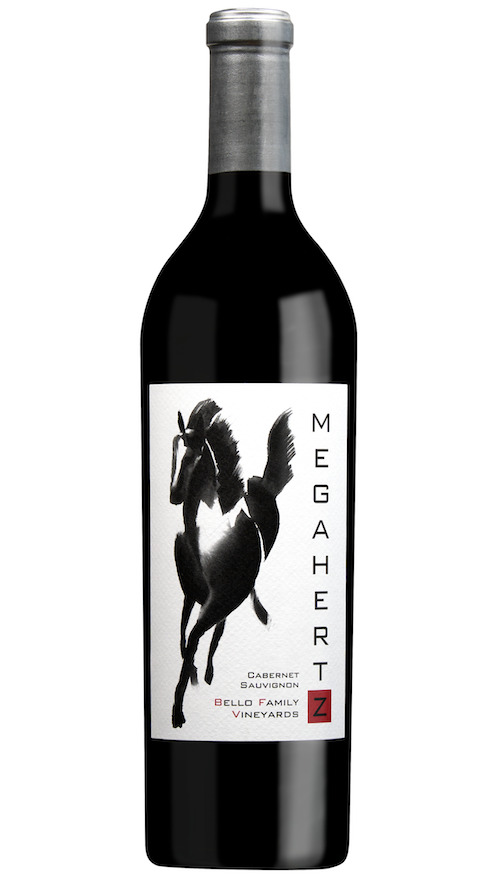
Bello has scaled back his Thoroughbred interests, but he still produces wine at Bello Family Vineyards, including an award-winning cabernet sauvignon christened Megahertz. According to the winery literature, the cabernet features “an aromatic lift of fresh cherry, dry thyme and toasted black peppercorn” as well as “flavors of black cherry, racy black berry and plum compote.” The Megahertz cab also has a very good finish, which only makes sense.
“We wanted the wine to be worthy of her," Bello said. "The Megahertz cabernet has never been out of production, and it has always been our best seller.”
• Read all Jay Hovdey's features in his Favorite Racehorses series
Jay Hovdey: Lost In The Fog – a lightning strike of a racehorse
View the latest TRC Global Rankings for horses / jockeys / trainers / sires


